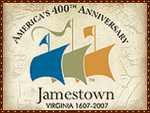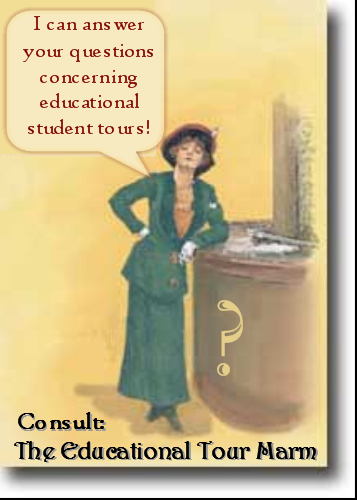Interpreting Memorials, Monuments & Museums: Forward


Forward
It shouldn't take floodlights to illuminate a site.
Recently, EHT at History is Elementary posted something about telling stories rather than always presenting dry facts. Her post gave me a way to introduce my own future posts on the interpretation of monuments, memorials, and museums. In the past, I have conducted informal workshops for teachers, who had been planning to travel to Washington, DC. with their students, and were interested in learning how to teach on-site.
I love to tell stories, too! However, learning to tell stories is one of the hardest lessons to convey to city tour guides (most are hourly step-on guides) who want to transition into the educational student tour profession. City guides have been accustomed to an almost scripted commentary on and off the bus, which point out places en route and rattle off facts and statistics before each stop. Notice I used the word ‘stop’, for that is what a normal visit to a site involves; a ‘stop’ or a ‘photo op’. Some guides might give a bit of trivia , but that is the extent of their job. These guides are purely informational and simply facilitate the visits. Many of them do a very fine job given the constraints of time etc., but there is neither depth to the experience nor connection made with the group.
The term educator, comes from the Latin, to lead out, and that is exactly what we do. Full service (24-hour), professional, educational tour guides are educators who present and frame the history on-site. We achieve this by relating them to sites that the group may have been seen previously, as well as past discussions or lessons. .Many of us don’t give all the statistics, they’re not always important. (one can find them in the brochure, tour book, or online.) Each of my colleagues develops a theme or two that he or she employs in order to put the site into context. Interesting stories about the site, some personal experiences, or observations from other groups are usually shared by the tour guide. Some of us have come to appreciate curriculum standards and might even use them as a guide to interpretation. It is important to have some idea of the baseline before a guide starts a discussion; asking students what they know about the person or site is a great way to assess the base of knowledge. After the baseline is determined, certain aspects of the site should be highlighted according to the determination, and the students should be directed to seek them out. Questions should be posed at each site and the students should try to find the answers. Finally, there should always be time enough after the group visit for a short discussion or assessment. The emphasis should not be placed on the structure or site, but the meaning and significance of the person or event. Each site should be turned into a discovery to engage the student.
If you’ve read my post concerning the use of poetry on tour (in the recent issue of the AFT quarterly, The American Educator) or Bringing Cemeteries to Life (first published in LOST magazine), you’ll understand my background and preparations for my presentations. One has to work very hard on one’s approaches and tailor it to various types of groups to keep it interesting and relevant. Nothing is static; many of my stories have changed due to new revelations or my on-going research and study. Even the current events will affect my delivery. One needs to be receptive, imaginative, and flexible.
Recently, I was in New York City with a performing arts group from San Diego. It was a small, intimate group and as a result there was more time for exchanges of ideas and observations.
We were crossing Central Park on my usual route from the West Side (Strawberry Fields) to the East Side in order to get to the Metropolitan Museum of Art. One of the ‘stops’ or ‘photo ops’ is a lovely fountain by the side of a lake. It is called the The Bethesda Fountain. I spoke a little bit about the fountain and how it was recently restored. They loved that the statue is called the Angel of the Waters. It was a hot, sunny day and after allowing them to rest a bit, people-watch, and to take a group photo (above), I was asked what ‘Bethesda' meant. (The reason is not explained in any of the Central Park tour literature or tour books, and at the point it was installed, the public was more scripturally knowledgeable and understood the context.) I hesitated because I hadn’t ever been asked that question. When I realized what it meant in a Christian context, it was a public school and I had to consider whether I should be quoting scripture (unfortunately, I need to be careful); I simply told them that it was after a biblical story in the New Testament. Bethesda in Hebrew means House of Mercy. One of the students remembered there was a Naval hospital of that name in Maryland, since we had passed it on tour.
The teacher smiled sweetly and turned to her students. “Let me tell you the story.”
After relating John 5, the students were truly affected and turned around again to take more photos. This time, the photos had more meaning.
Even I miss some opportunities.
The Tour Marm
In the following months, I’ll be posting some of my approaches to the interpretation of specific memorials, monuments, and museums one would come across during the course of a tour of the East Coast.
Naturally, You are welcomed to add any of your own ideas and experiences.















1 comment:
Telling stories is a very large part of my professional conservation work. Instead of intepreting monuments and memorials, I interpret forests, stone walls, spring wildflowers, quarries, and above all the three greatest influences on what one encounters on the landscape - Geology, Climate, Disturbance (natural and that caused by our species). One can approach the built environment in a similar fashion. I was struck on afternoon in lawrence MA when I stopped in the gritty downtown to read the names on its Civil War memorial. They represented the laboring class at mid-19th century - Irish, German, French canadian, Italian - and a smaller number from the ld Puritan families. The residents of modern Lawrence, however, are overwhelmingly Hispanic, well represented in the less grandios monuments from the Viet Nam and Gulf Wars
Post a Comment